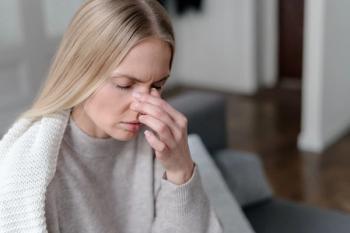
Lifetime HIV Risk Disparities Persist, According to CDC Data
Using data from the National HIV Surveillance System, the National Center for Health Statistics, and the US Census, a team from the CDC investigated lifetime HIV risk in the United States.
Persistent disparities in the lifetime risk of an
These investigators utilized data on HIV diagnosis, mortality, and census population from the National HIV Surveillance System, the National Center for Health Statistics, and the US Census, respectively. Probability of an HIV diagnosis at any age was calculated via HIV diagnoses and non-HIV deaths from 2017 to 2019 and compared with similar data from 2010 through 2014.
“Estimating the lifetime risk may be a useful tool for clinicians, partners, and policy makers when describing the burden of HIV since it can be more readily understood by the public,” the authors wrote. “Estimates of lifetime risk are used to compare the burden of disease across populations.”
Overall, their numbers show a 1 in 120 lifetime risk of an HIV diagnosis for 2017 to 2019 vs 1 in 106 for 2010 to 2014, which is an 11% improvement.
When comparing this outcome between females and males, the risk was lower for females (1 in 309) and greater for males (1 in 76), so that the latter had a 4 times greater risk of an HIV diagnosis.
Also, when stratifying risk by race, females had a universal lower lifetime risk of HIV vs males:
- Black:
- Females: 1 in 75
- Males: 1 in 27
- Hispanic/Latino:
- Females: 1 in 287
- Males: 1 in 50
- Native Hawaiian/other Pacific Islander:
- Females: 1 in 611
- Males: 1 in 89
- American Indian/Alaska Native:
- Females: 1 in 435
- Males: 1 in 116
- White:
- Females: 1 in 874
- Males: 1 in 171
- Asian:
- Females: 1 in 1298
- Males: 1 in 187
Further, when comparing 2010 to 2014 and 2017 to 2019, lifetime risk was shown to be down for most groups. The exceptions were males of American Indian/Alaska Native, Hispanic/Latino, and Native Hawaiian/other Pacific Islander descent and White females.
Breaking the findings down
When summing the investigators’ findings, lead author Sonia Singh, PhD, from the CDC’s Division of HIV Prevention, noted that their findings assume “the rate of infection will continue [and] that prevention efforts work,” as evidenced by the decline seen between the 2 periods.
However, there is still need for continued progress in HIV prevention and treatment because of the ongoing risk disparities.
Reference
Singh S, Hu X, Hess K. Estimating the lifetime risk of a diagnosis of HIV infection in the United States. Presented at: Conference on Retroviruses and Opportunistic Infections; February 12-16, 2022; Virtual. Abstract 43. https://www.croiconference.org/abstract/estimating-the-lifetime-risk-of-a-diagnosis-of-hiv-infection-in-the-united-states/
Newsletter
Stay ahead of policy, cost, and value—subscribe to AJMC for expert insights at the intersection of clinical care and health economics.








